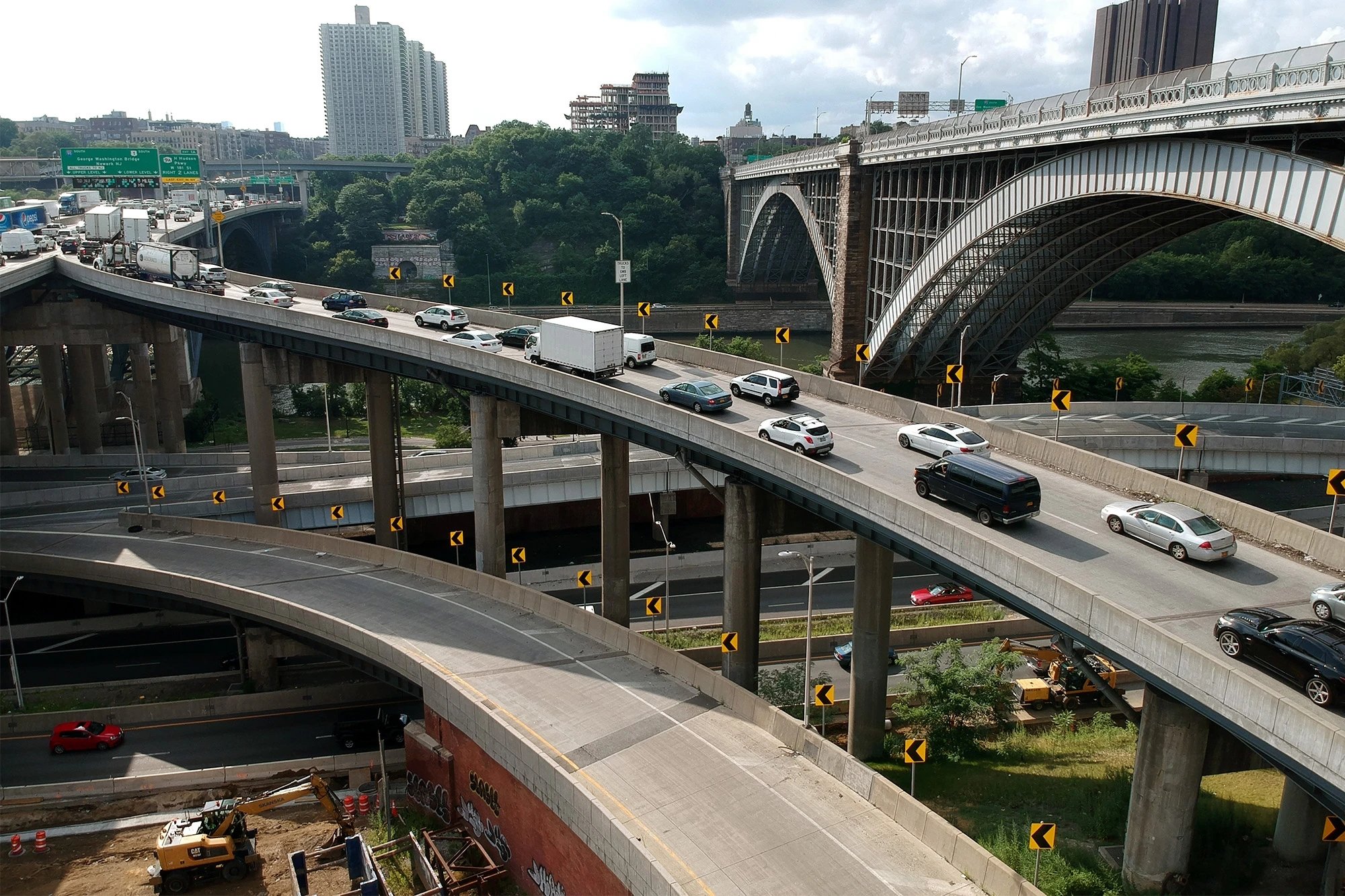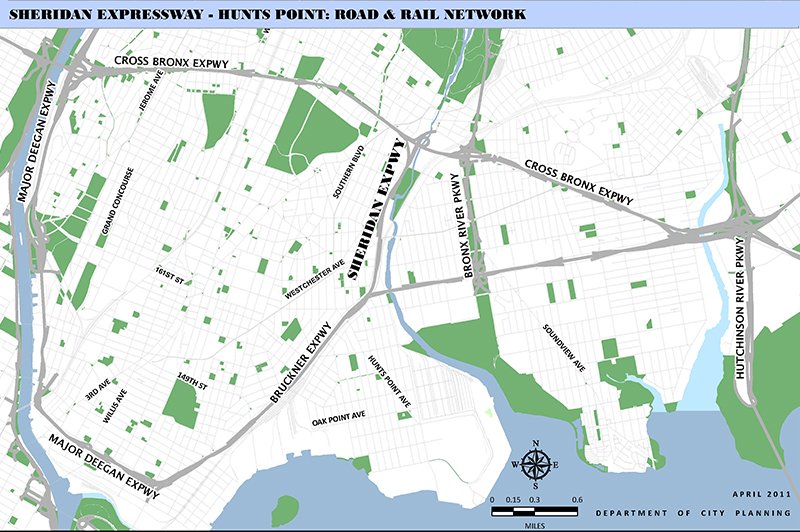
the Cross Bronx Expressway
the History, the Story, the Culture
History of the Project
1936 - Regional Plan Association (RPA) proposed a cross-Bronx highway, connecting the George Washington, Triborough, and Bronx–Whitestone bridges, as well as access to New England.
1948 - Began construction of the expressway in portions
Nov. 5, 1955 - The first portion, from the Bronx River Parkway east to the Bruckner Interchange
April 1963 - the $128 million Cross Bronx Expressway was completed.
Who benefits/ Who doesn’t
Residents:
Neighborhoods have experienced financial decline via lowered property value as a result of the Expressway
Caused the public to oppose many future expressway proposals in New York City
Contributes to some of the nation’s highest asthma rates. (hospitalization rate up 2-3 times since built)
Truck Drivers:
Truckers avoid it and utilize the Cross-Westchester Expressway to the New York State Thruway and the Major Deegan Expressway to navigate I-95.
General commuters:
Although it’s a connection to interstates upstate and Jersey, The Expressway remains riddled with traffic issues despite opening routes for commuters
Proposed Solutions
The Capping Project: “community-driven” plan to cap parts of the 6.5-mile expressway with air filtration systems, and pedestrian walkways.
Sow portions of the highway with green space, thus rethreading the neighborhood connection that was disconnected by the structure.
The expressway produces noise and air pollution that puts roughly 250,000 people living in the South Bronx at the highest risk for asthma in the country.
The researchers aim to target two miles of the highway that are below ground, converting them into tunnels.
The project could mitigate pollution through installing air purifiers along the capped area.
These systems are already utilized in the city, such as in the Hudson tunnel, where vehicle exhaust is filtered.
The incorporation of materials – like carbon fibers and titanium dioxide coating – can confine toxic chemicals like nitrous oxide.
Concrete, fiberglass and other porous materials could also help reduce traffic noise.
How an infrastructure change might benefit the area
“The Cross Bronx has long been a structure of environmental racism. We have as good of an opportunity as any to reverse the legacy of Robert Moses in the South Bronx.” -US representative Ritchie Torres.
Muennig and his team researched cost effectiveness of capping the Cross Bronx
Estimated that each resident residing close to the highway would save roughly $317 in future health costs while gaining about 45-50 days of life lived in perfect health.
Interesting Facts / Trivia
Construction required blasting through ridges, crossing valleys and redirecting small rivers.
The expressway had to cross 113 streets, 7 expressways and parkways (some of which under construction), one subway line, 5 elevated lines, 3 commuter rail lines, and hundreds of utility, water and sewer lines, none of which could be interrupted.
The Cross Bronx Expressway is blamed for worsening the decay of neighborhoods in the South Bronx, such as Tremont.
In Robert Caro's The Power Broker, the author argues that Robert Moses intentionally directed the expressway through this neighborhood, despite a more viable option only one block south.
The Vartan Gregorian
Elementary School
Location: 455 Wickenden St, Providence
Issue: The school is near the (East Providence
Expressway) cousing Air pollution which affect the
school
Solution: Air-filtration systems was installed
Facts:
- The highway (East Providence Expressway) is
used by more than 30,000 cars daily.
- Kids are more vulnerable to air pollution
because they tend to spend a lot more time
outside than adults.
- Providence alone has 24 schools within 1,000
feet of major roads, including three schools for
students with special needs.
Safety Intersection
Improvements
Location: US 29 and S-96 (Welcome Road)
Description: The South Carolina Department of
Transportation (SCDOT) plans to add a single lane
roundabout to the intersection of US 29 and S-96
(Welcome Road) in Anderson County, South Carolina.
Purpose: to improve the safety of the existing
intersection.
Facts:
-In South Carolina, the most recent study
of intersections converted to a single-lane
roundabout by the Traffic Safety Office
have shown to reduce the total crashes by
64% and injury crashes by 79%
Highway Removal
-

Location: The Riverfront Parkway in Chattanooga
Issue: Limited access points contributed to heavy traffic delays and a degradation of the downtown character. Also, the highway did not allow residents easy access to the riverfront and, consequently, slowed economic growth.
Solution: highway was replaced for a boulevard allowed pedestrians easy access to riverfront and provided greater connectivity to downtown Chattanooga
-

Facts:
- The highway was built to efficiently move industrial truck traffic throughout the region
-It carried approximately 20,000 vehicles per day
Wolf Creek Bridges
-

Location: Craig Frontage Rd, Wolf Creek, MT 59648
Issue: The bridge deck surfaces are heavily worn down. The upper deck portion of the bridge has deteriorated and needs to be replaced.
Solution: Resurfacing the north and southbound Wolf Creek Interchange Bridges on I 15. and replacing the upper deck portion of the Little Prickly Pear Creek Bridge located on Walsh Street.
-

The resurfacing and replacement of these bridge decks will help ensure the safety and integrity of the roadway for motorists and the community of Wolf Creek
US 2 Culbertson
-

Location: US 2-Culbertson
Issue: safety improve is need, pedestrian accessibility, drainage, and roadway conditions in the heart of Culbertson.
Solution: Rehabilitating the road surface, curb, gutter, storm drainage, and sidewalk throughout the more urban areas on US 2.
-

restaurant
education
more map
















